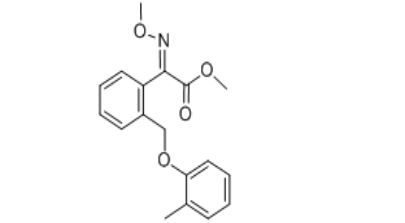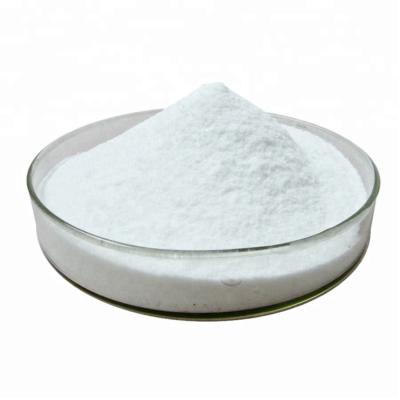Kresoxim-methyl Methoxy Acrylate Fungicide
Common name: kresoxim-methyl
Chemical name:
(E)-2-Methoxyimino-[2-(o-methylphenoxymethyl)phenyl]methyl acetate
Molecular formula: C18H19NO4
Methoxyacrylate fungicides. The main players are cereal crops, rice, potatoes, apples, pears, pumpkins, grapes, etc.
Common name: kresoxim-methyl
Chemical name:
(E)-2-Methoxyimino-[2-(o-methylphenoxymethyl)phenyl]methyl acetate
Molecular formula: C18H19NO4
Structural formula:

Molecular weight: 313.35
CAS No. :
143390-89-0
Product description:
Kresoxim-methyl is a highly effective, broad-spectrum, new fungicide. It has a good control effect on strawberry powdery mildew, melon powdery mildew, cucumber powdery mildew, pear scab and other diseases. It can control and treat most diseases such as Ascomycetes, Basidiomycetes, Deuteromycetes and Oomycetes. It has a strong inhibitory effect on the germination of spores and the growth of mycelium in leaves, and has protective, therapeutic and eradicating activities. It is widely used to prevent and control diseases on fruit trees, vegetables, tea trees, tobacco and other crops. In addition, this product can have a positive physiological regulation effect on crops. It can inhibit the production of ethylene and help crops have a longer time to store bioenergy to ensure maturity; it can significantly improve the activity of crop nitrification reductase. When attacked, it can accelerate the formation of proteins in the anti-virus.
Physical and chemical properties:
Kresoxim-methyl is a white powder crystal, melting point: 97.2-101.7℃, density: 1.258kg/L (20℃), vapor pressure 1.3*10-6Pa (25℃), solubility 2mg/L (20℃). Acute oral LD50: The acute oral LD50 of both male and female rats is greater than 5000 mg/kg. Acute transdermal LD50: Acute transdermal LD50 of both male and female rats is greater than 2000mg/kg. No irritation to rabbit eyes and skin. Ames test, mouse sperm teratogenicity test and mouse micronucleus test were all negative.
Usage:
Methoxyacrylate fungicides. The main players are cereal crops, rice, potatoes, apples, pears, pumpkins, grapes, etc. It has protective, therapeutic and eradicating activities for most diseases caused by pathogenic fungi such as Ascomycetes. The recommended dose is safe to crops, non-phytotoxic, and safe to the environment.
Submitted successfully
We will contact you as soon as possible




